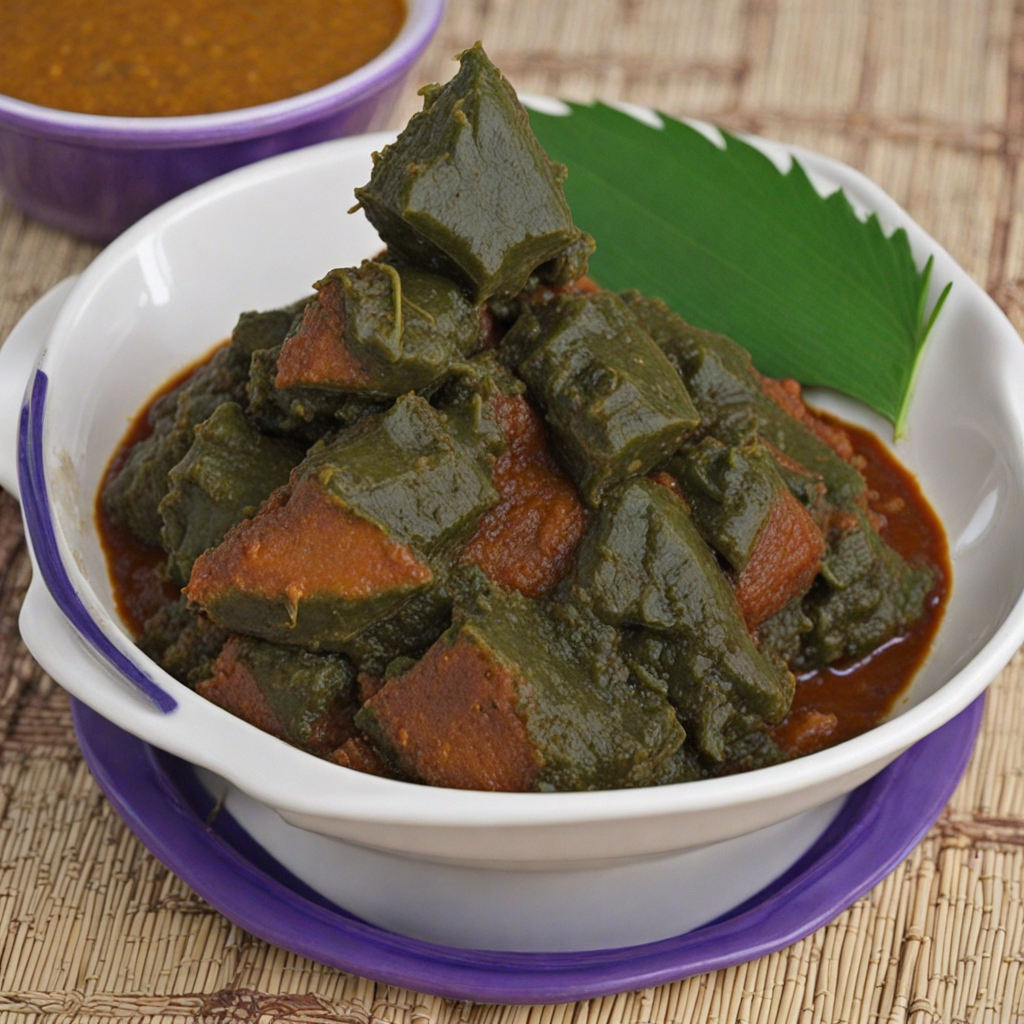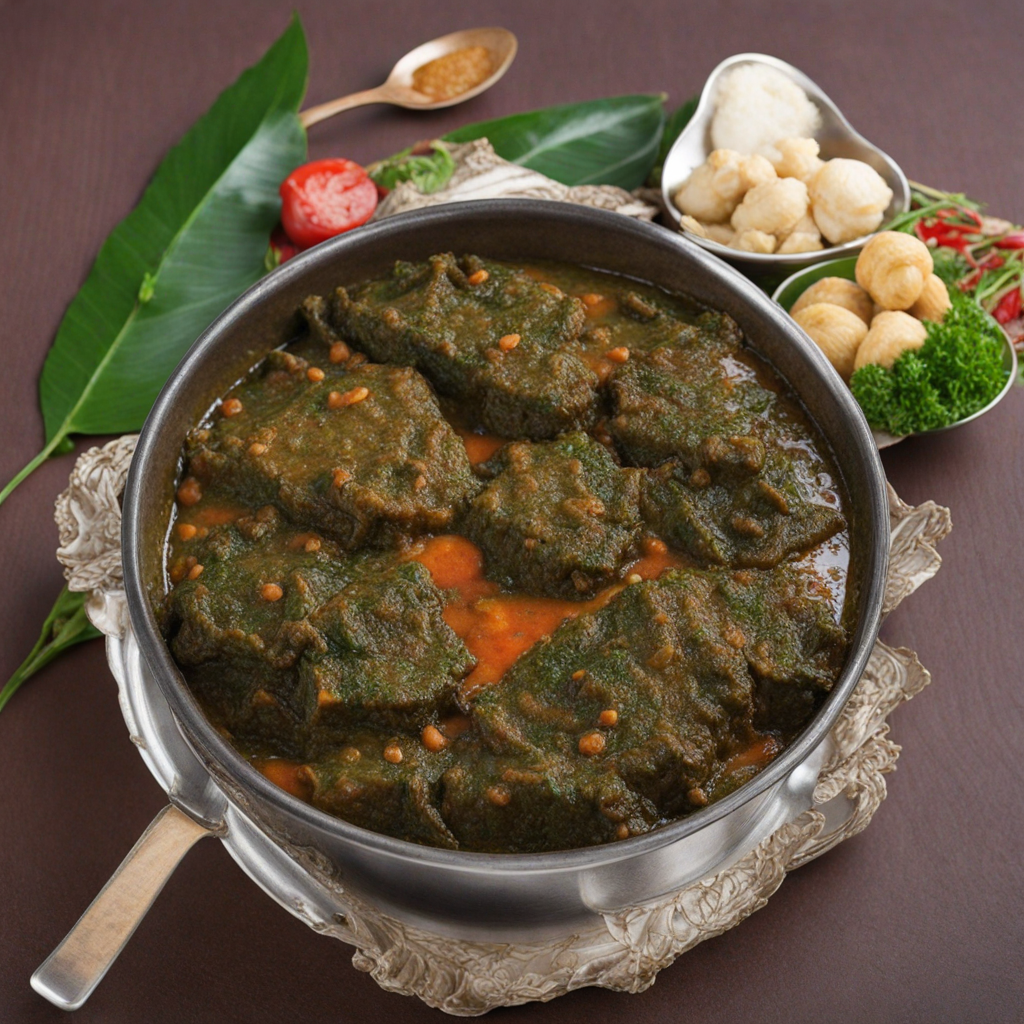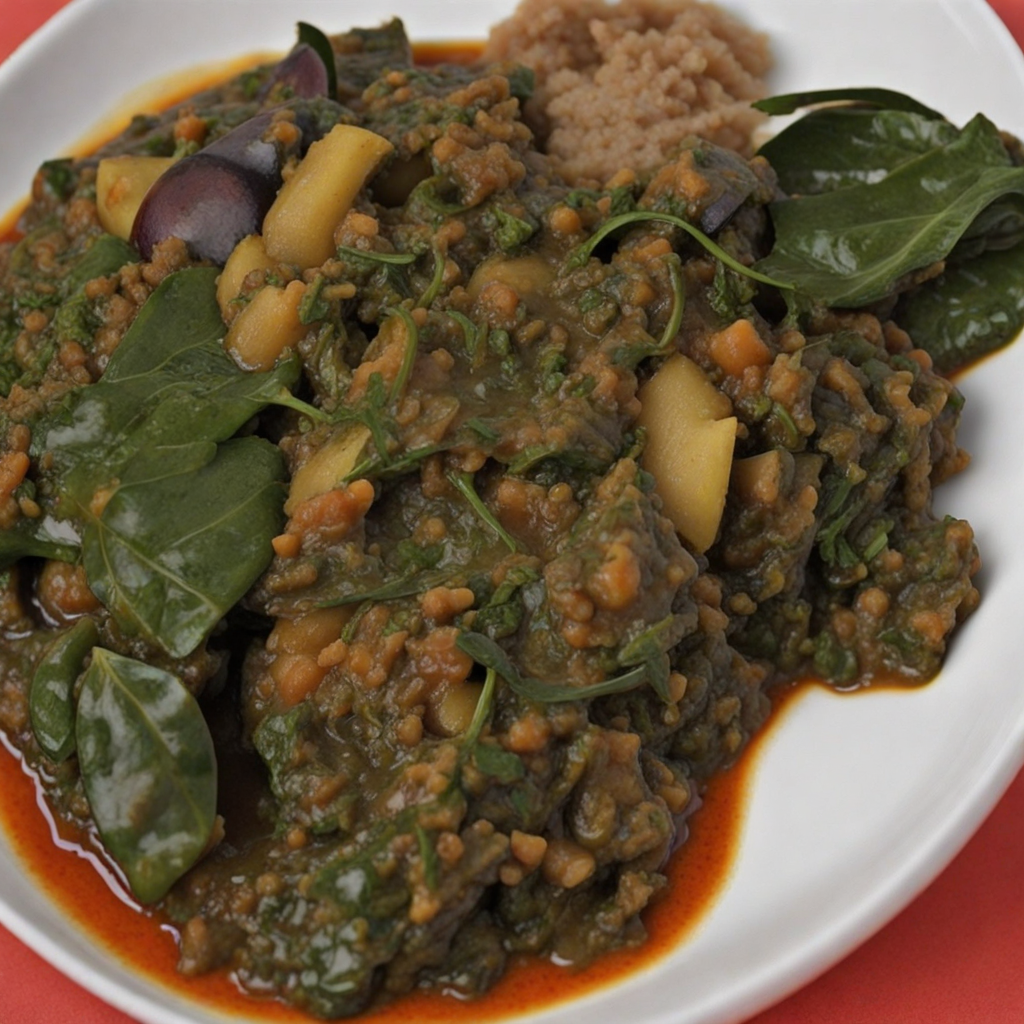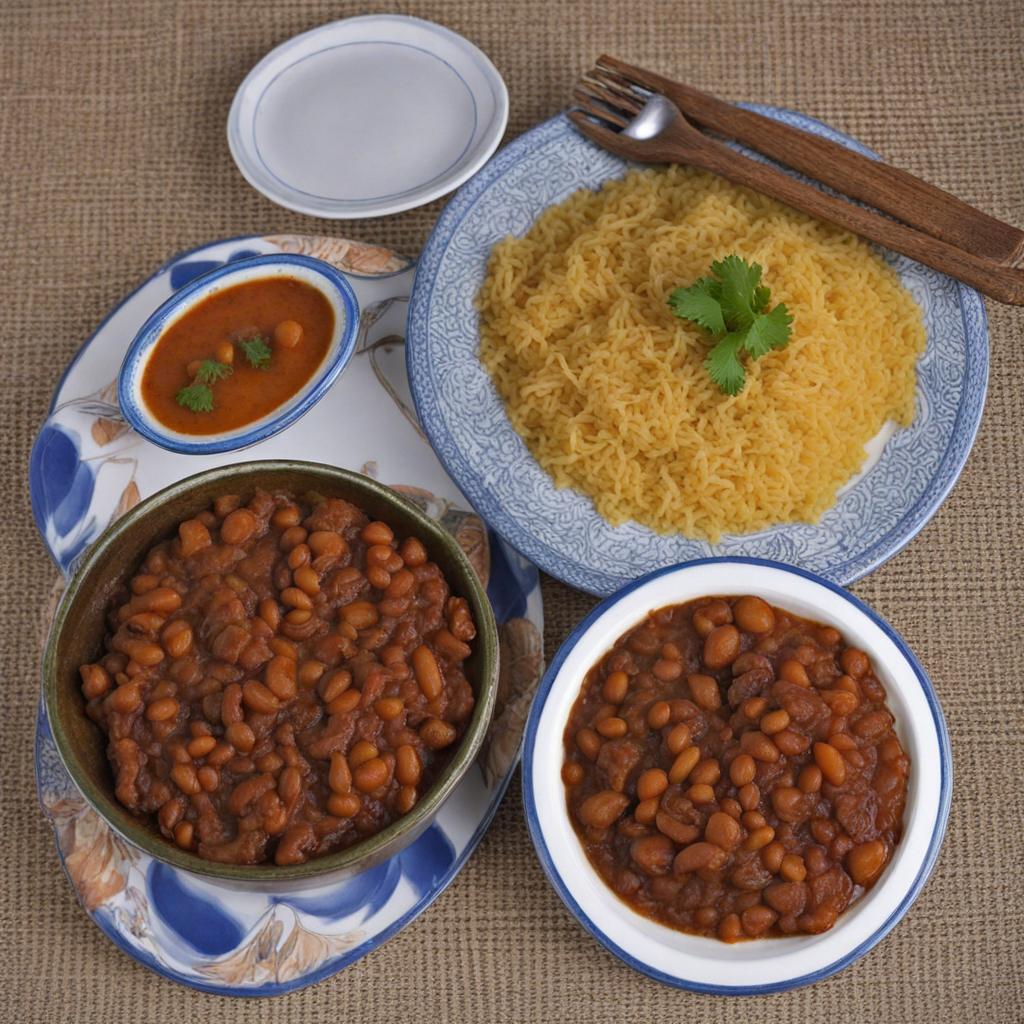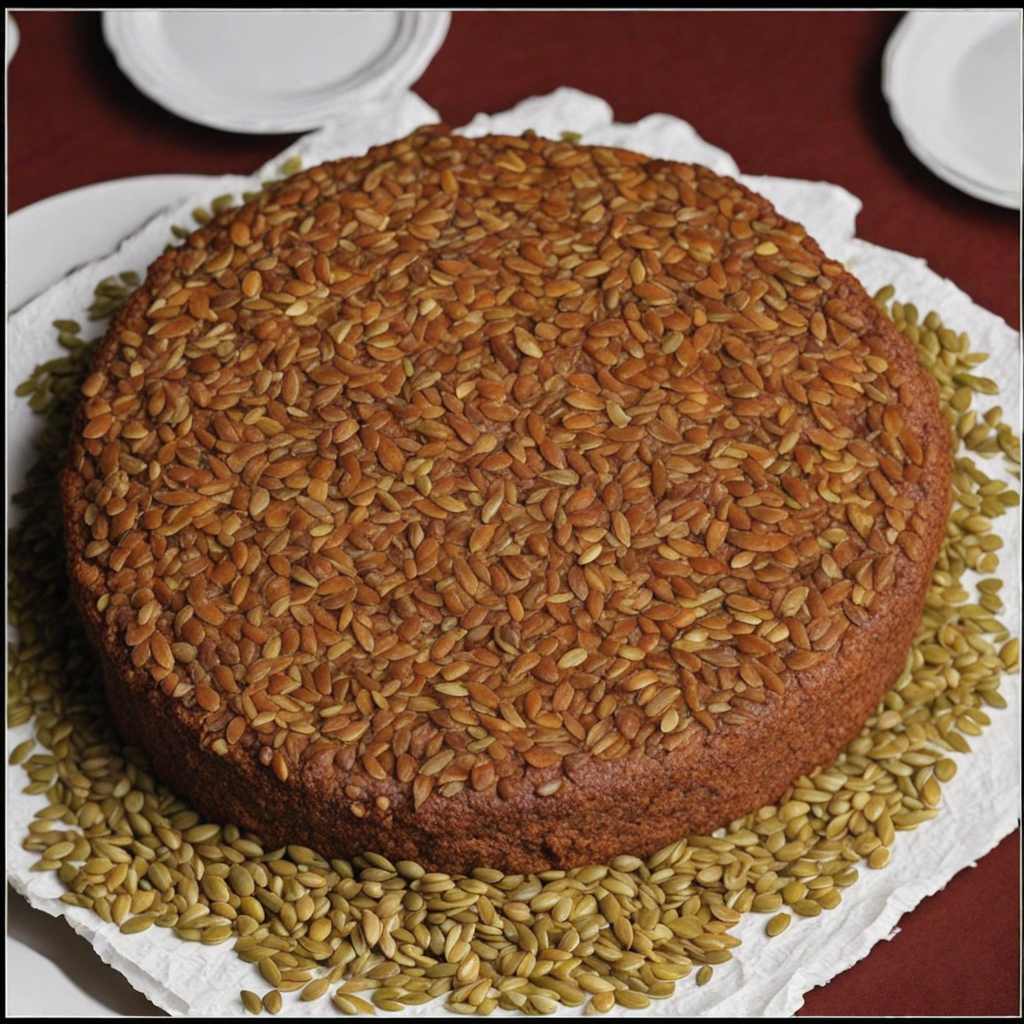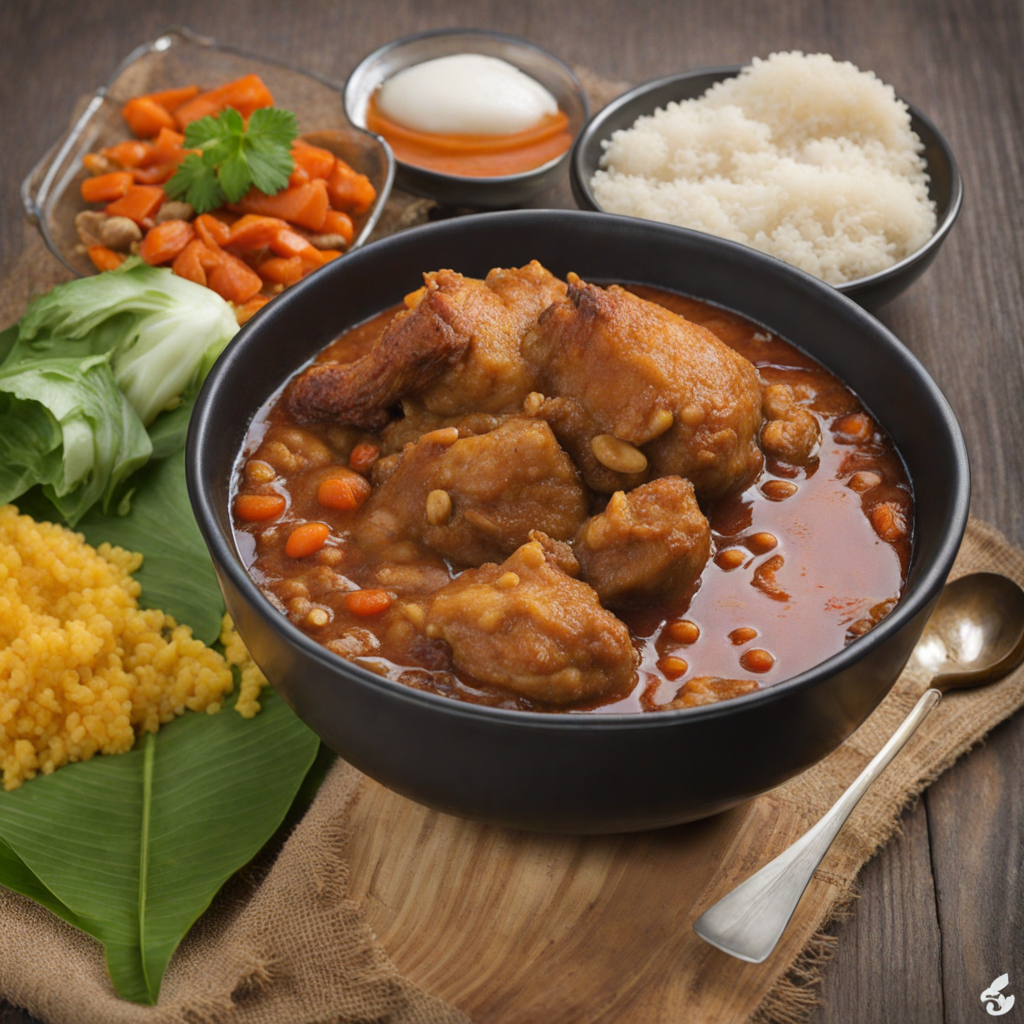Saka Saka
Saka Saka is a traditional Congolese dish that showcases the rich culinary heritage of the Democratic Republic of the Congo. At its core, Saka Saka is made from cassava leaves, which are finely chopped and then cooked down to create a flavorful and nutrient-packed base. The leaves provide a slightly bitter yet earthy flavor that is complemented by the addition of ingredients like ground peanuts or palm oil, which contribute creaminess and depth to the dish. The cooking process often involves simmering the leaves slowly to enhance their flavor while softening their texture, resulting in a dish that is both hearty and satisfying. In addition to the cassava leaves, Saka Saka can be enriched with various proteins such as fish, meat, or beans, making it a versatile dish that can cater to different dietary preferences. The fish often used is smoked or dried, adding a unique umami taste that balances the leafy greens. When served, Saka Saka is typically accompanied by a side of starchy staples like rice or plantains, which help to soak up the rich sauce and round out the meal. The dish is often enjoyed communally, reflecting the strong cultural traditions surrounding food in Congolese society. The experience of eating Saka Saka is not just about flavor; it’s about the textures and the warmth of the dish that resonates with the heart of Congolese hospitality. Each bite offers a delightful combination of the tender, cooked cassava leaves and the crunchiness of the ground peanuts, creating a symphony of flavors that dance on the palate. As you delve into this vibrant dish, you’ll discover a world of taste that reflects the land, the people, and their deep-rooted culinary customs, making Saka Saka a must-try for anyone eager to explore new and exciting flavors.
How It Became This Dish
The History of Saka Saka: A Culinary Treasure of the Democratic Republic of the Congo Saka Saka, also known as "Saka-Saka" or "Saka Saka," is a traditional dish that holds a special place in the culinary landscape of the Democratic Republic of the Congo (DRC). Made primarily from cassava leaves (known as "manioc" or "yuca"), Saka Saka is a rich, flavorful dish that embodies the agricultural practices, cultural heritage, and communal values of the Congolese people. #### Origins and Ingredients The roots of Saka Saka can be traced back to the indigenous peoples of Central Africa, who have cultivated cassava for centuries. Cassava, a hardy tuber, was introduced to Africa from South America in the 16th century by Portuguese explorers and quickly adapted to the continent's diverse climates. Over time, it became a staple food source for many African communities, particularly in regions where other crops struggled to thrive. The preparation of Saka Saka involves carefully harvesting young cassava leaves, which are rich in nutrients but contain cyanogenic glycosides that can be toxic if consumed raw. To make the leaves safe to eat, they must be thoroughly washed, chopped, and cooked for extended periods. The process often involves boiling the leaves and then sautéing them with palm oil, spices, and often ground peanuts or smoked fish, resulting in a dish that is both nutritious and flavorful. #### Cultural Significance Saka Saka is more than just a dish; it is a symbol of Congolese identity and a testament to the resilience of its culture. The act of preparing Saka Saka is often a communal activity, bringing families and communities together. Traditionally, women play a central role in the harvesting and preparation of cassava leaves, which reflects broader gender roles within Congolese society. The process fosters community bonding and the transmission of culinary knowledge from one generation to the next. In the DRC, Saka Saka is often served on special occasions, such as weddings, communal feasts, and religious celebrations. Its presence at these gatherings underscores the dish’s role in reinforcing social ties and celebrating Congolese heritage. It is commonly eaten alongside staples like fufu (a starchy dough made from cassava or other grains) or rice, creating a well-rounded meal that nourishes both the body and spirit. #### Development Over Time As the DRC has undergone significant social, political, and economic changes throughout the 20th and 21st centuries, so too has the culinary landscape, including the preparation and consumption of Saka Saka. The dish has evolved while retaining its traditional roots, reflecting both the challenges and resilience of the Congolese people. In the wake of colonialism and the subsequent struggles for independence, the DRC saw a resurgence of interest in indigenous practices, including traditional cooking. This revival was fueled by a desire to reclaim cultural identity and heritage in the face of globalization, which often promotes Western dietary habits. Saka Saka, with its deep ties to the land and local agricultural practices, became emblematic of this movement. However, the DRC also faced significant challenges, including political instability, economic hardship, and conflict. These factors impacted agricultural production and food security. As cassava remains a staple crop, many families rely on it as a primary source of sustenance. Consequently, Saka Saka has become an important dish not only for its nutritional value but also as a means of survival during difficult times. In recent years, the international culinary community has started to take notice of African cuisines, and Saka Saka has gained recognition beyond the borders of the DRC. Chefs and food enthusiasts have begun to explore traditional African dishes, and Saka Saka has been featured in various culinary festivals and events. This newfound appreciation has led to a fusion of flavors, with contemporary chefs experimenting with traditional recipes while incorporating global influences. #### Modern Variations and Globalization While traditional Saka Saka remains popular in the DRC, modern variations have also emerged. Urbanization and exposure to global culinary trends have led to the incorporation of diverse ingredients, such as chicken, beef, and various spices. In urban settings, Saka Saka can be found in restaurants and food stalls, often served with a modern twist that appeals to younger generations. Social media has played a pivotal role in promoting Saka Saka and other Congolese dishes to a global audience. Food bloggers and influencers share recipes, cooking demonstrations, and personal stories, helping to raise awareness of the DRC's rich culinary heritage. This digital platform has enabled Congolese communities in the diaspora to connect with their roots and share their culture with a broader audience. #### Conclusion Saka Saka is more than just a dish; it is a narrative woven into the fabric of the Democratic Republic of the Congo's identity. Its origins in indigenous agricultural practices, cultural significance in community bonding, and evolution amidst sociopolitical challenges showcase the resilience and adaptability of Congolese cuisine. As Saka Saka continues to gain recognition both locally and globally, it serves as a delicious reminder of the rich culinary traditions that thrive in the heart of Africa. In a world increasingly driven by fast food and convenience, Saka Saka stands as a testament to the importance of heritage, community, and the enduring power of traditional foodways. Whether enjoyed in a bustling urban restaurant or at a family gathering in a rural village, Saka Saka remains a cherished dish that nourishes both body and soul, inviting all who partake to share in its rich history and cultural significance.
You may like
Discover local flavors from Democratic Republic Of The Congo


